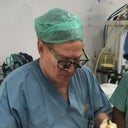My PS says for better results to do a facelift with stitches in the muscle as opposed to just cutting out skin. What are the pros and cons of this as opposed to not touching the muscle and just stitching the skin?
Answers (26)
From board-certified doctors and trusted medical professionals
Dr. Ronald J. Edelson, MD

Dr. Ronald J. Edelson, MD
Board Certified Plastic Surgeon
Answer
Dr. Amir Nakhdjevani, MBBS, MRCS, FRCS(Plast)

Dr. Amir Nakhdjevani, MBBS, MRCS, FRCS(Plast)
Specialist Registered Plastic Surgeon
Answer
Dr. Raymond E. Lee, MD

Dr. Raymond E. Lee, MD
Board Certified Facial Plastic Surgeon
Answer
Dr. John Michael Thomassen, MD

Dr. John Michael Thomassen, MD
Board Certified Plastic Surgeon
Answer
Dr. Stephen Prendiville, MD

Dr. Stephen Prendiville, MD
Board Certified Facial Plastic Surgeon
Answer
Dr. Pejman Aflaki, MD

Dr. Pejman Aflaki, MD
Board Certified Plastic Surgeon
Answer
Dr. Larry Weinstein, MD

Dr. Larry Weinstein, MD
Board Certified Plastic Surgeon
Answer
Dr. Gerald Minniti, MD, FACS

Dr. Gerald Minniti, MD, FACS
Board Certified Plastic Surgeon
Answer
Dr. Richard Greco, MD

Dr. Richard Greco, MD
Board Certified Plastic Surgeon
Answer
Dr. Robert M. Tornambe, MD

Dr. Robert M. Tornambe, MD
Board Certified Plastic Surgeon
Answer
More Facelift Questions
See all Facelift Q&AWE SEND PRETTY
EMAILS
What’s trending? Who’s turning heads? Which TikTok myths need busting? We’ve got you. No fluff, no gatekeeping—just real talk. Get our free, unfiltered newsletter.